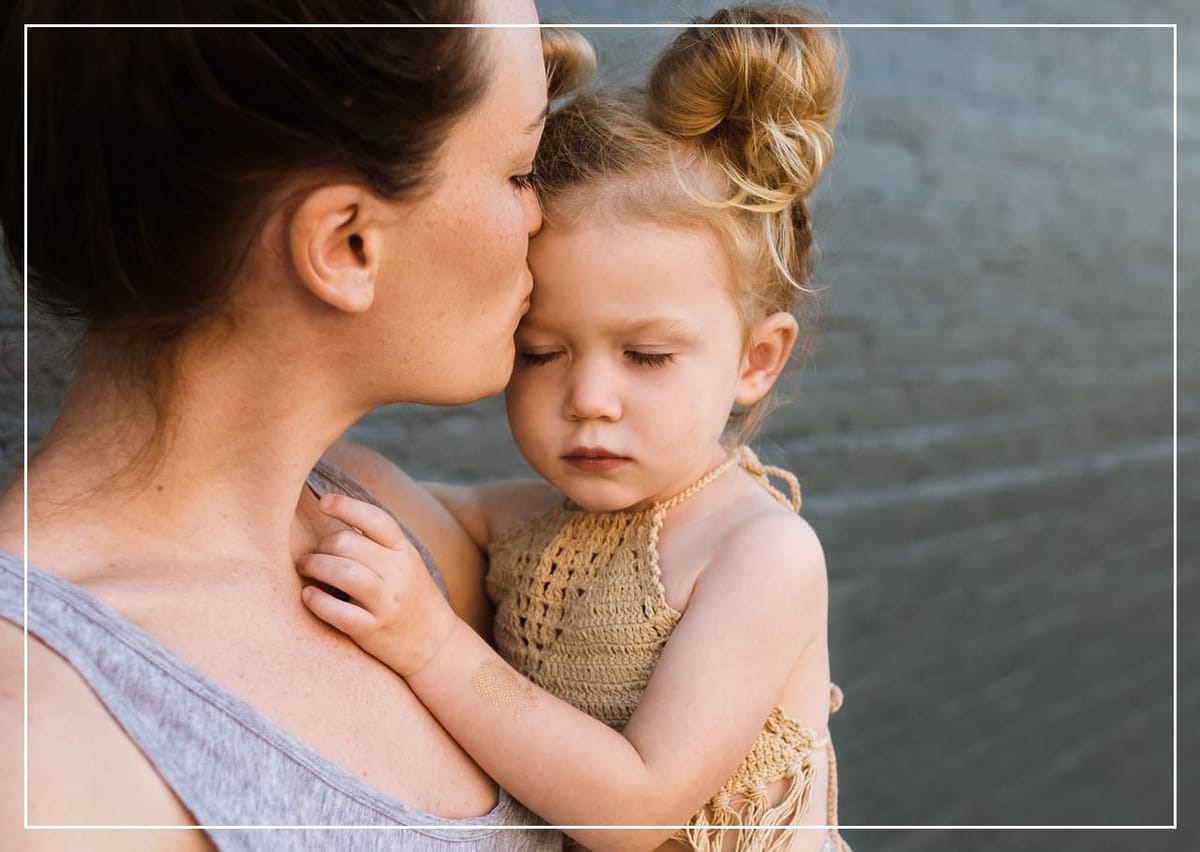How to Soothe an Angry Baby: A Parent’s Guide to Calm and Comfort
Soothing an angry baby requires patience, empathy, and practical techniques. This guide provides insights into why babies get angry, how to calm them at various stages, and expert tips for reducing frustration in infants, toddlers, and young children.

Dealing with an angry baby can be one of the most stressful experiences for new parents. The intense crying, frustration, and seemingly endless restlessness can feel overwhelming. But understanding why your baby is angry and learning how to calm them can make all the difference.
In this guide, we'll explore why babies get angry, the most common triggers, and actionable techniques for soothing your baby when emotions run high. We'll also dive into expert insights and practical advice for parents, helping you navigate these tough moments with confidence.
Table of Contents
- Understanding Why Babies Get Angry
- Common Reasons for Anger in Babies
- How to Calm an Angry Baby: Effective Techniques
- The Role of Emotional Regulation
- Dealing with Anger at Different Developmental Stages
- Books and Resources for Managing an Angry Baby
- Self-Care for Parents Dealing with an Angry Baby
- When to Seek Professional Help
- Conclusion: Patience and Understanding Are Key
Understanding Why Babies Get Angry
One of the first steps to soothing an angry baby is understanding why they’re upset. Babies can’t express their feelings through words, so they rely on crying, fussing, and other behaviors to communicate. While it may seem like anger, what you’re seeing is often frustration, discomfort, or a cry for attention.
Emotional Development in Infants
From birth to about 12 months, babies are rapidly developing both physically and emotionally. At this stage, they are entirely dependent on their caregivers to meet their needs. When these needs aren't met quickly, it can result in what looks like "anger." In reality, the baby is struggling with their limited ability to regulate emotions.
According to pediatricians like Dr. Harvey Karp, author of The Happiest Baby on the Block, babies are used to the calm, womb-like environment they’ve experienced for nine months. When they enter the world, everything is new—sounds, sensations, and experiences are overwhelming, leading to frequent crying or what may seem like episodes of anger.
Common Reasons for Anger in Babies
Babies can experience anger or frustration for various reasons. Each baby is unique, but some of the most common causes of fussiness or anger in infants include:
1. Hunger
Babies have tiny stomachs and need to eat frequently. If they’re hungry and not fed quickly, their frustration may escalate into what appears to be anger. Hunger is often one of the most common triggers for crying in infants.
Solution: Feeding your baby at regular intervals, and recognizing early hunger cues—such as smacking lips, sucking on hands, or fussing—can prevent their emotions from escalating.
2. Tiredness
Just like adults, babies can become irritable when they’re overtired. They may struggle to fall asleep, leading to frustration. Many parents notice that their babies cry more during the "witching hour"—typically in the late afternoon or evening, when babies are more likely to be overstimulated and fatigued.
Solution: Establish a consistent sleep routine, paying close attention to the early signs of tiredness, such as rubbing eyes or yawning. The more predictable the routine, the easier it will be for your baby to settle down.

3. Discomfort
A wet diaper, diaper rash, or uncomfortable clothing can lead to physical discomfort that makes babies fussy. Babies are especially sensitive to temperature changes or tight clothing, which can contribute to their frustration.
Solution: Regularly check and change your baby’s diaper, and dress them in comfortable, weather-appropriate clothing. Keeping the environment at a comfortable temperature also helps prevent discomfort.
4. Overstimulation
Too much noise, light, or interaction can overwhelm babies, causing them to cry as a way of signaling they’ve had enough. Young babies, in particular, have limited coping mechanisms for managing sensory overload, which can manifest as fussiness or “angry” outbursts.
Solution: Create a calm environment by reducing noise, dimming the lights, or taking your baby to a quieter room when you notice signs of overstimulation, such as fussing or turning their head away from stimuli.
5. Frustration with Movement
As babies grow and start learning new skills, such as rolling over, crawling, or sitting up, they can become frustrated when they aren’t able to do what they want. This frustration often manifests as crying or angry outbursts.
Solution: Encourage your baby’s efforts without pushing them too hard. Giving your baby time to practice new skills and offering support, rather than rushing in to help too quickly, can reduce their frustration.
For more insights into a baby’s emotional needs and sources of frustration, Your Baby and Child by Dr. Penelope Leach provides valuable information on early childhood development and understanding the triggers behind a baby’s anger.
How to Calm an Angry Baby: Effective Techniques
Once you understand why your baby is upset, you can begin to calm them. Below are some proven techniques to help soothe an angry or frustrated baby.
The 5 S’s Method (From The Happiest Baby on the Block)
Dr. Harvey Karp’s 5 S’s method is one of the most well-known and effective techniques for calming a fussy baby. These steps aim to recreate the comforting sensations your baby experienced in the womb:
- Swaddling: Wrapping your baby snugly in a blanket mimics the feeling of the womb and helps them feel secure.
- Side or Stomach Position: Holding your baby on their side or stomach can help calm their fussiness. However, always place them on their back to sleep.
- Shushing: The sound of shushing mimics the white noise they’re used to in the womb, helping them calm down.
- Swinging: Gentle, rhythmic movements like rocking or swinging can provide comfort. Consider using a baby swing or rocking chair.
- Sucking: A pacifier or breastfeeding can help calm a baby by fulfilling their natural sucking reflex.

For more detailed guidance on the 5 S’s, The Happiest Baby on the Block provides a step-by-step approach to using these techniques to soothe a fussy baby.
Physical Comfort
Holding your baby close, especially skin-to-skin, is a powerful way to comfort an angry baby. Skin-to-skin contact releases oxytocin (the "love hormone") in both you and your baby, helping to reduce stress and promote feelings of closeness.
- Gentle Touch: Rubbing your baby’s back, stroking their head, or offering soft touches can help soothe them when they’re upset.
- Rocking: Rhythmic movements, such as rocking back and forth or swaying while holding your baby, can mimic the motions they experienced in the womb.
The Role of Emotional Regulation
Babies don’t have the ability to regulate their emotions the way older children or adults do. They rely on their parents or caregivers to help them navigate difficult feelings. This is where the concept of emotion coaching comes into play—parents can help babies learn to manage emotions over time by providing consistent soothing and comfort.
John Gottman, a leading psychologist and author of Raising An Emotionally Intelligent Child, highlights the importance of parents being emotionally available for their children, even from infancy. While babies can’t yet understand the nuances of their emotions, responding to their cues with empathy and calmness sets the foundation for emotional regulation as they grow.
How to Help Your Baby Regulate Emotions:
- Consistent Routines: Predictability helps babies feel secure. Establishing consistent feeding, sleep, and play routines provides a sense of control, helping to prevent anger or frustration.
- Soothing Words: Even though babies can’t understand words yet, speaking softly and gently to them when they’re upset can have a calming effect. The tone of your voice can signal that they’re safe and supported.
- Parental Calm: Babies are highly attuned to their caregivers’ emotions. When you stay calm and patient, even in the face of your baby’s anger, it helps them calm down too.

Dealing with Anger at Different Developmental Stages
Babies, toddlers, and children express anger differently as they grow and develop. Here’s a breakdown of what to expect at each stage and how to manage it effectively:
1. Infants (0-6 months)
At this stage, babies express anger or frustration through crying. This is their primary way of communicating, so if they’re hungry, tired, or uncomfortable, they’ll cry until their needs are met.
How to Soothe an Infant:
- Respond Quickly: Infants thrive on quick responses. The faster you meet their needs, the less likely they are to become inconsolable.
- Swaddle and Hold: Swaddling makes infants feel safe, and holding them close (especially skin-to-skin) can comfort them almost instantly.
- Rhythmic Movements: Rocking, bouncing, or walking with your infant can help soothe them when they’re upset.
2. Babies (6-12 months)
As babies grow, they start to become more aware of their surroundings and emotions. Frustration can arise from things like teething pain, separation anxiety, or the desire to move but not having the motor skills to do so.
How to Soothe a Baby:
- Teething Relief: Teething rings or cold washcloths can help soothe teething pain.
- Engage in Play: Distraction through interactive play can help shift their focus away from frustration.
- Reassure Them: Separation anxiety often peaks at this age, so providing plenty of reassurance when leaving the room or introducing a comfort object like a favorite blanket can help.
3. Toddlers (1-3 years)
Toddlers begin to assert their independence, which often leads to tantrums when things don’t go their way. Their desire for autonomy clashes with their limited ability to communicate or control their emotions.
How to Soothe a Toddler:
- Acknowledge Their Feelings: Let your toddler know that you understand their frustration. This validation can help calm them.
- Offer Choices: Giving toddlers simple choices (e.g., “Do you want the red cup or the blue cup?”) helps them feel in control and reduces frustration.
- Redirect: If your toddler is getting upset about something they can’t have or do, redirect their attention to a different activity or toy.
For more tips on dealing with toddler tantrums and emotional outbursts, No-Drama Discipline by Daniel J. Siegel and Tina Payne Bryson is an excellent resource on how to calmly address difficult behaviors.
4. Preschoolers and Young Children (3-6 years)
At this stage, children begin to develop a more complex understanding of their emotions but may still struggle to express them verbally. Tantrums or anger outbursts can occur when they don’t get their way or when they feel misunderstood.
How to Soothe Young Children:
- Help Them Name Emotions: Teach your child to identify and label their emotions. Saying things like, “I see you’re feeling angry because you can’t have more candy” helps them understand their feelings.
- Calm-Down Space: Create a calm-down area where your child can go to relax when they’re upset. This space should be free from distractions and filled with comforting items like a stuffed animal or soft blanket.
- Teach Breathing Techniques: Simple breathing exercises can help your child learn how to calm themselves during emotional moments. Encourage them to take deep breaths or “blow out candles” when they feel angry.
For a deeper dive into managing emotions in older children, The Whole-Brain Child by Daniel J. Siegel and Tina Payne Bryson offers a neuroscience-based approach to understanding children
Books and Resources for Managing an Angry Baby
When it comes to understanding and managing an angry baby, many books provide expert advice and actionable strategies. Below are a few highly recommended resources:
- The Happiest Baby on the Block by Dr. Harvey Karp – This book introduces the 5 S’s method and offers practical advice for calming fussy, colicky, or angry babies.
- Your Baby and Child by Dr. Penelope Leach – A comprehensive guide to understanding a child’s development, from infancy through preschool, including why babies cry and how to soothe them.
- Raising An Emotionally Intelligent Child by John Gottman – This book focuses on helping children develop emotional intelligence, and while it’s geared toward older children, its principles of emotional regulation can be applied to infants as well. By responding to your baby’s needs with empathy and understanding, you lay the foundation for their future emotional health.

Self-Care for Parents Dealing with an Angry Baby
Taking care of an angry or fussy baby can be exhausting. The relentless crying and constant need for attention can wear parents down emotionally and physically. It’s important to remember that caring for yourself is just as crucial as caring for your baby. Without adequate self-care, it’s easy to burn out, which can impact your ability to provide the patience and care your baby needs.
Tips for Parental Self-Care:
- Ask for Help: It’s okay to ask family members, friends, or a trusted babysitter to step in for a few hours so you can rest or take a break. Never feel guilty for needing time to recharge.
- Take Breaks: If you’re feeling overwhelmed, place your baby in a safe spot like a crib and step away for a few minutes to collect yourself. Sometimes, even a brief moment of peace can make a difference in how you handle the situation.
- Practice Mindfulness: Deep breathing exercises, meditation, or simply focusing on calming thoughts can help you stay centered during difficult moments. It’s important to regulate your emotions, as babies are highly attuned to their parents' emotional states.
- Sleep When the Baby Sleeps: While it’s often easier said than done, getting enough sleep is essential for your mental health. Even a short nap can help you feel more rested and prepared to handle an angry baby.
- Connect with Other Parents: Sometimes, sharing your experiences with other parents can provide comfort and reassurance. You’re not alone in dealing with a fussy or angry baby, and talking with others can help alleviate feelings of isolation.
Book Reference: Genevieve Shaw Brown’s The Happiest Mommy You Know offers great advice for balancing baby care with self-care, reminding parents that their well-being is essential for a healthy, happy family.
When to Seek Professional Help
Most babies experience bouts of anger or fussiness as part of their normal development, but there are times when excessive crying or frustration may indicate a deeper issue. If your baby’s crying is persistent, intense, or accompanied by other symptoms, it’s important to consult your pediatrician.
Signs That Require Professional Attention:
- Inconsolable Crying: If your baby is crying for several hours at a time, despite your best efforts to soothe them, this may be a sign of a condition like colic, acid reflux, or another underlying medical issue.
- Changes in Eating or Sleeping Habits: If your baby suddenly refuses to eat, experiences a drastic change in sleep patterns, or seems lethargic, this could indicate a health problem.
- Physical Symptoms: Crying accompanied by vomiting, diarrhea, rashes, fever, or difficulty breathing warrants immediate attention from a healthcare professional.
- Developmental Concerns: If you notice your baby missing developmental milestones, such as not responding to stimuli or not making eye contact, it’s worth discussing with your pediatrician.
Book Reference: Dr. William Sears’ The Baby Book offers in-depth advice on recognizing when medical attention is necessary and what steps to take if your baby’s crying indicates a deeper issue.
Conclusion: Patience and Understanding Are Key
Soothe an angry baby requires patience, empathy, and flexibility. Babies communicate their needs through crying and fussiness, and while it can be challenging to figure out what they need, you’ll become more attuned to their cues with time and experience. It’s important to remember that your baby’s “anger” is often a sign of frustration, overstimulation, or discomfort, and with the right strategies, you can help calm their emotions and create a sense of security.
Building a soothing routine, practicing emotional regulation techniques, and staying calm during your baby’s fussy periods are key steps toward creating a peaceful environment. Your baby is relying on you not just for their physical needs but also for emotional comfort. By approaching these moments with calmness and understanding, you’ll foster a strong, loving bond that will grow as your baby matures.
Remember that every baby is unique, and what works for one might not work for another. Keep experimenting with different techniques and trust that your efforts will pay off in time. And always remember—when things feel too overwhelming, it’s okay to take a break, reach out for help, or consult a professional. Parenting is a journey, and with patience and self-care, you’ll find your way through even the toughest moments.
Final Recommendations for Further Reading:
- The Happiest Baby on the Block by Dr. Harvey Karp – A go-to guide for soothing fussy and angry babies, featuring the famous 5 S’s method.
- Your Baby and Child by Dr. Penelope Leach – Offers valuable insights into child development and tips for calming a baby’s anger and frustration.
- Raising An Emotionally Intelligent Child by John Gottman – While focused on older children, it provides foundational principles of emotional intelligence that can be applied from infancy.
- The Baby Book by Dr. William Sears – A comprehensive guide to baby care, including advice on how to soothe excessive crying and recognize potential health issues.
- Calm the Crying by Priscilla Dunstan – Learn how to interpret your baby’s cries and respond to their specific needs effectively.
- The Baby Book by Dr. William Sears – A complete guide for new parents, offering insights on how to understand your baby’s needs, soothe excessive crying, and recognize potential health concerns that might be causing discomfort.
- Calm the Crying by Priscilla Dunstan – This book focuses on understanding the different types of baby cries and offers techniques for decoding your baby’s specific needs to help calm them effectively.



